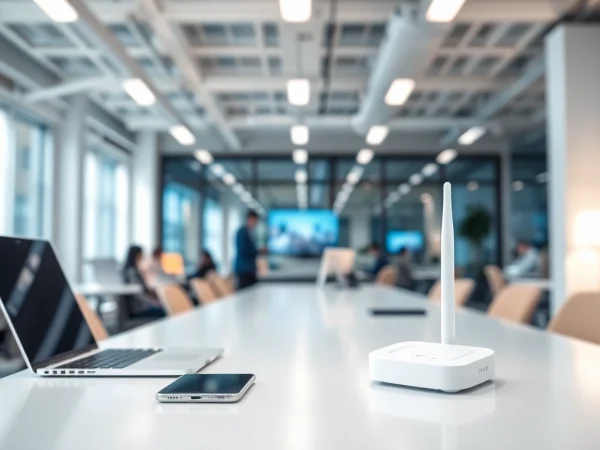Enhancing Performance with Site Reliability Engineering Experts
Understanding the Role of Site Reliability Engineering Experts
What is Site Reliability Engineering?
Site Reliability Engineering (SRE) is a discipline that incorporates aspects of software engineering and applies them to infrastructure and operations problems. The primary goals are to create scalable and highly reliable software systems. SRE involves the implementation of best practices across engineering teams to ensure that production systems are stable, resilient, and performant. Defined by many as a unique blend of development and operations, SRE is characterized by its emphasis on automation, monitoring, and customer satisfaction. As businesses increasingly rely on technology, the role of Site reliability engineering experts has become more essential than ever.
Key Responsibilities of Site Reliability Engineering Experts
Site Reliability Engineering experts take on a plethora of responsibilities that are crucial for maintaining the health and efficiency of systems. Below are some core duties associated with this role:
- System Design and Architecture: Ensuring system architecture supports scalability and reliability, incorporating tools and methodologies aligned with both business goals and technological capabilities.
- Monitoring and Incident Response: Proactively monitoring system performance to identify and mitigate potential issues before they affect users. This includes setting up alerting mechanisms based on predefined Service Level Indicators (SLIs) and Service Level Objectives (SLOs).
- Automation: Developing scripts and tools that automate repetitive tasks, allowing engineering teams to focus on higher-level responsibilities rather than routine operational demands.
- Capacity Planning: Forecasting future system loads and requirements to ensure infrastructure can adequately support growth without sacrificing performance.
- Disaster Recovery: Designing and implementing strategies to recover services and data in the event of a catastrophic failure, ensuring minimal downtime and swift restoration of services.
Difference Between SRE and Traditional IT Roles
While both Site Reliability Engineers (SREs) and traditional IT roles involve managing systems and ensuring uptime, there are key differences in approach and philosophy:
- Focus on Reliability: SREs prioritize reliability as a core aspect of their work, often measuring their impact through system performance metrics and user satisfaction indices.
- Collaboration with Development: Unlike traditional roles that may operate in silos, SREs collaborate closely with software developers to integrate reliability into the development process from the beginning.
- Engineering Approach: SREs leverage engineering practices to solve operational tasks, employing programming skills and statistical analysis to build reliable systems.
- Service Level Objectives: SREs utilize SLIs and SLOs as defining metrics to gauge service reliability and team performance, whereas traditional IT roles may focus on uptime percentage independently of user experience.
Why Businesses Need Site Reliability Engineering Experts
Benefits of Hiring Site Reliability Engineering Experts
The adoption of SRE practices within organizations can drive substantial benefits, including:
- Enhanced Reliability: With a dedicated focus on reliability, SREs help businesses maintain services that meet customer expectations, resulting in higher levels of satisfaction.
- Improved Performance: Continuous performance monitoring and iterative improvements lead to systems that act efficiently under varying loads.
- Cost Efficiency: Automation performed by SREs reduces the burden of manual tasks, allowing for resource optimization and less downtime.
- Faster Incident Response: With effective monitoring and logging, SREs can quickly respond to incidents, minimizing downtime and adverse impacts on users.
Common Misconceptions About Site Reliability Engineering
Despite the growing recognition of SRE, several misconceptions persist that obscure its value:
- SRE is just DevOps: While SRE shares principles with DevOps, it has a distinct focus on reliability metrics and service availability rather than just collaboration and automation.
- Anyone can be an SRE: The role requires a specific skill set, including a deep understanding of systems design, distributed systems, and operational excellence.
- SRE is only for large organizations: Even small businesses with critical systems can benefit from SRE practices, improving operational resilience irrespective of scale.
Transforming your Business with Site Reliability Engineering
Widespread adoption of Site Reliability Engineering practices can lead to transformative changes in operations and product delivery. By providing a structured approach to managing and optimizing system reliability, SRE enables businesses to:
- Innovate More Rapidly: With robust performance metrics, teams can push changes confidently, knowing that systems will remain stable.
- Align Technology with Business Goals: SRE allows organizations to match operational capabilities with strategic objectives, translating technical performance into business outcomes.
- Foster a Culture of Continuous Improvement: By emphasizing learning from incidents and performance analytics, SRE cultivates an environment where iteration and growth are valued.
Best Practices for Working with Site Reliability Engineering Experts
Building Effective Communication Channels
Communication is critical when it comes to integrating SRE functions within an organization. Best practices include:
- Regular Check-ins: Establishing a cadence of meetings where SREs can update stakeholders on performance metrics and potential risks.
- Documentation: Maintaining open records of incidents, changes, and performance reviews fosters transparency and accountability among teams.
- Cross-Functional Collaboration: SRE teams should not work in isolation. Encourage collaboration between developers, product managers, and other stakeholders to ensure mutual understanding of goals.
Setting Realistic Service Level Objectives
Service Level Objectives (SLOs) are pivotal to measuring and maintaining service reliability. It is important to:
- Define Clear Metrics: Identify which metrics truly represent service stability and performance for your users.
- Align with User Expectations: SLOs should be reflective of what end-users expect, ensuring they are achievable yet ambitious enough to drive improvement.
- Review and Adapt SLOs: SLOs should be dynamic, adapting to changes in user patterns and system capabilities over time.
Implementing Continuous Improvement Strategies
A commitment to continual refinement enhances the overall reliability of services. To implement continuous improvement:
- Conduct Post-Mortems: After incidents, have structured reviews that focus on lessons learned and root cause analysis rather than assigning blame.
- Monitor User Feedback: Use tools to collect and analyze user feedback regularly, aligning improvements with real user experiences.
- Invest in Training: Ensure ongoing education and trainings for SREs and related teams, keeping them updated on best practices and emerging technologies.
Challenges in Site Reliability Engineering
Addressing Reliability Issues
Although SRE is designed to mitigate reliability issues, challenges persist:
- Identifying Root Causes: Sometimes, incidents escalate before their root causes are fully identified. Implementing thorough logging and monitoring aids in shortening response time.
- Managing Dependencies: Complex systems can make it difficult to determine which component failure led to an outage. Dependency mapping tools can help clarify these relationships.
- Scaling Efforts: As systems grow, ensuring consistent reliability becomes more difficult. Scalability testing can help balance performance needs against growing user demand.
Managing Operational Overhead
Operational overhead can hinder SRE objectives if not managed efficiently. Consider the following strategies:
- Automate Repetitive Tasks: Utilize automation scripts to handle mundane operations, freeing up time for more strategic initiatives.
- Leverage Cloud Services: Cloud-based solutions can offload some operational burdens, allowing teams to focus on core engineering tasks.
- Implement Observability: Invest in observability tools that provide comprehensive insights into system health, streamlining maintenance and improvement efforts.
Technical Debt and its Implications
Technical debt can impede progress in SRE efforts. Understand its implications:
- Prioritize Refactoring: Allocate time for code refactoring and system optimization to alleviate the weight of technical debt.
- Maintain Documentation: Keep technical documentation up to date, which helps in transitioning projects or onboarding new team members efficiently.
- Consider Long-Term Costs: Evaluate the long-term impact of technical debt on system performance and user experience, emphasizing its importance in planning.
The Future of Site Reliability Engineering Experts
Emerging Trends in Site Reliability Engineering
The field of Site Reliability Engineering is constantly evolving. Some trends to watch include:
- Increased Use of Artificial Intelligence: AI will become more integral to predicting system failures and automating processes, providing insights that enhance decision-making.
- Focus on User-Centric Metrics: More emphasis will be placed on user satisfaction metrics, as businesses recognize that user experience is paramount.
- Integration of Security Practices: Securing systems within the framework of reliability will lead to coordinated efforts between SRE and security teams.
The Role of Automation in Site Reliability Engineering
Automation is pivotal in the SRE landscape, serving several functions:
- Incident Response Automation: Automating certain incident responses can drastically reduce resolution times when problems arise.
- Deployment Automation: Using CI/CD pipelines ensures that code is tested and deployment is handled efficiently, reducing the risk of human error.
- Infrastructure as Code: This practice enables teams to manage infrastructure programmatically, enhancing flexibility and consistency in provisioning.
Preparing for the Future Workforce in SRE
The SRE workforce will undergo significant transitions. Preparing involves:
- Upskilling Existing Talent: Encourage current employees to learn about SRE practices and principles through professional development opportunities.
- Diverse Hiring Strategies: Actively seek individuals from diverse backgrounds to bring fresh perspectives to traditional SRE practices.
- Collaboration with Educational Institutions: Partnering with universities and technical schools can foster a new generation of talent equipped with the latest SRE skills.










